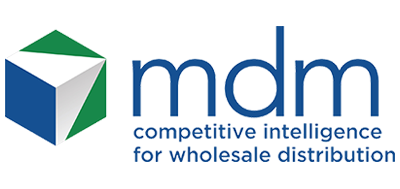Do you remember the last time your ERP underwent a substantial overhaul?
A 5-year-old (or more) ERP is a dinosaur in today’s fast-moving technology world. While that still doesn’t mean you absolutely need to upgrade your ERP, being out-of-date creates risk and slows down your business. It also results in missed opportunities to take advantage of newer technologies like AI.
Poor ERP performance doesn’t happen in a vacuum. Like storm clouds looming over a cornfield, the universe will give you signs it’s time to upgrade your ERP. Here’s what to look for.
Your ERP Isn’t Playing Well with Newer Technologies
Legacy ERP platforms are technical debt. If your ERP system relies on outdated technology, it can hinder business operations. You may encounter integration issues where your ERP struggles to cooperate with newer systems, making data synchronization across your tech stack difficult.
We had a distribution client hindered by legacy software so old it was incapable of upgrades. The system had reached its limits for scalability, and cybersecurity risks were accelerating. Additionally, the lack of real-time data hindered forecasting and demand planning. It was time for a switch.
Legacy ERP often fails to integrate fully (or at all) with modern solutions such as CRM, ecommerce and specialized technologies. This leads to data silos and inefficiencies, as well as more errors from manual data updates across systems. It also doesn’t support the seamless shopping experience buyers want today.
Teams may receive untimely or inaccurate data. Front-line sales teams may lack the transparency they need to interact appropriately with customers. Company stakeholders may have to rely on guesswork for long-term strategy due to poor or inaccessible data.
You’re Experiencing Poor and Unreliable System Performance
Frequent slowdowns, crashes, or extended downtime indicate that your ERP system struggles to meet your business demands. These issues can lead to decreased productivity and increased frustration among employees.
Common problems we’ve seen include:
- Frequent slowdowns or lag when processing transactions or generating reports.
- Regular system crashes or the need for constant maintenance.
- Can’t support increased users or concurrent transactions without significantly reducing performance.
- Difficulty in handling larger volumes of data as business grows.
Any of these problems can disrupt business as usual. If your system also requires older hardware to function, it will be harder to maintain and replace.
You’re Unable to Scale Operations Efficiently
As your distribution business grows, your ERP system should be able to scale with it. The pain points around scalability are when your current system can’t handle increased data volumes, user counts, or transactions. Scalability is crucial for supporting long-term growth without system overhauls.
Data Is Inadequate for Decision-Making
If your current ERP system lacks advanced reporting and analytics features, it’s a significant drawback. Many distributors have a high volume of channel partnerships and products to manage. Visibility is key to meeting customer needs, optimize inventory, drive smarter sales, and focus on the right markets.
Users Are Frustrated
The user interface (UI) is crucial to the success of any technology system. If your employees find the current system difficult to use, it can lead to errors, reduced productivity, and increased training costs. It can also lead to a long onboarding process for new employees. A well-designed UI speeds up training and reduces staff frustration.
Modern systems often come with intuitive interfaces, user-friendly dashboards, and enhanced usability features that can improve overall user satisfaction. If your ERP is counterintuitive, your team will find workarounds (such as Excel spreadsheets) to avoid using these tools. A poor user experience (UX) leads to software inefficiencies, data mismanagement, and data input errors.
You’re Worried about Compliance and Security
As regulations and security threats evolve, your ERP system must be able to comply with the latest standards while protecting your data. You don’t want to leave your business vulnerable to data breaches and regulatory penalties. Some of the causes due to legacy systems include missing software updates; weak authentication processes; and third-party vendor vulnerabilities. Upgrading to a more secure and compliant ERP system can mitigate these risks.
Maintenance and Upgrade Costs Continue to Rise
Older ERP systems often require more maintenance, including frequent patches, updates, and hardware upgrades. Downtime can cripple usage and customer support is higher. These ongoing costs add up, making it more economical to invest in a new cloud ERP that requires less maintenance and offers better long-term value.
Your System Is Inflexible around Customization
If your current ERP system is rigid and doesn’t allow necessary customizations, it can hinder your ability to optimize your operations. Ironically, these customizations sometimes keep distributors from upgrading because new software can break the platform.
Modern solutions are typically more flexible and can be tailored to meet your needs. Working with a provider that already integrates common requirements for distributors can also reduce the number of customizations needed.
Time to Move Forward
Upgrading your ERP can yield substantial benefits. One of our distributor clients expressed amazement at the “significant productivity and growth” they experienced after upgrading their legacy ERP platform because they were able to take advantage of automation and artificial intelligence (AI). That sped up manual tasks and reduced operational errors. “We put away pallets faster, see those pallets in the inventory faster, ship faster…it’s not a matter of doing it fast but fast and correct at the same time.”
By recognizing these signs and taking proactive steps to address them, you can ensure that your technology continues to support your distribution business. Distributors can no longer afford to use outdated technology if they want to retain their competitive edge.
Related Posts
-
Company veteran Thomas Knoebel succeeds Susie Hopper as President of distribution ERP provider Tribute following…
-
To improve lead time accuracy, Border States electrical supplies distributor will implement a AI-based prediction…
-
At long last, U.S. manufacturing activity appears to be back in the black.



